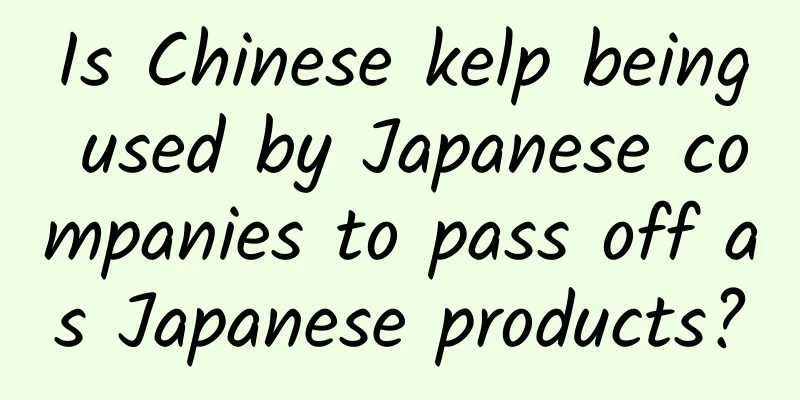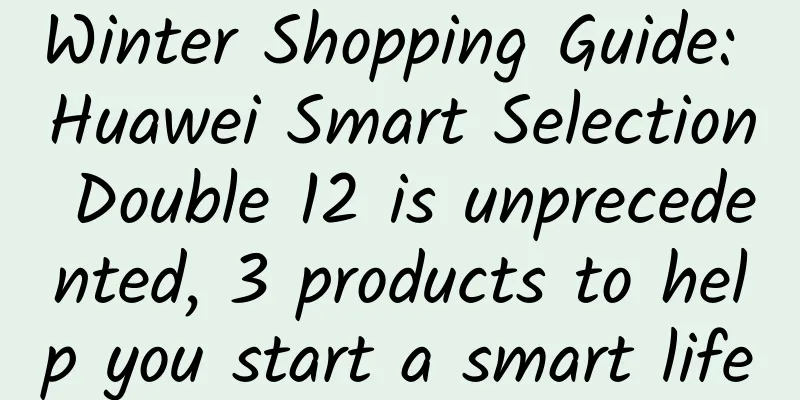Is Chinese kelp being used by Japanese companies to pass off as Japanese products?

|
A few days ago, I saw a news report that a Japanese company was exposed for using kelp produced in China to pass it off as Japanese-made products. As a result, the head of the company was arrested by the police. The head of a relevant Japanese company once said in an interview that he was unaware of this | Source: Internet According to insiders, Japanese wakame producers have been using Chinese and Korean wakame to fake products for more than a decade, which is far from the "craftsmanship" we have in our minds. Is Chinese wakame really that good? Today, let's find out why Japan would rather use Chinese wakame than Japanese wakame. 01 My name is "sea cabbage", but I'm not a vegetable Undaria pinnatifida is a large algae. Although its name contains the word "vegetable" and people used to think that kelp was a plant, with the advancement of science and technology, humans have a new understanding of life science research and found that the differences between many organisms are still very large. Now mainstream taxonomy believes that kelp is not a plant, but belongs to the brown algae in the vesicular algae kingdom. Thick wakame | Tuchong Creative The false leaves of wakame are very thick and feel fleshy, and look like the stalks of the Chinese cabbage we often eat, so some places call it "sea cabbage". In Japanese, wakame is called "wakame". The word "wakame" refers to "konbu", which is kelp; and "wakame" means "young", because the appearance of wakame is very similar to a small kelp. Although kelp looks inconspicuous, it is the only large algae in the list of the 100 most harmful invasive organisms in the world published by IUCN. With the increasing development of global shipping, spores of kelp are often mixed into the ballast water of ships and spread to major seas around the world. I never thought that a small plate of kelp could be an ambitious person who wants to dominate the sea. 02 We also want world peace for wakame! The most common "shredded seaweed" we usually see in Japanese restaurants is wakame. In Japanese cuisine, wakame is often cut into thin strips and mixed with seasonings to eat as a cold dish, and is also often put into miso soup. Wakame contains a variety of vitamins, amino acids, and essential trace elements for the human body, such as calcium, iodine, zinc, selenium, and folic acid. In addition, studies have found that substances such as alginate and fucoxanthin contained in wakame can reduce the cholesterol content in human blood, strengthen blood vessels, and prevent high blood pressure and arteriosclerosis. Wakame, a popular plant in East Asia | Tuchong Creative Wakame has a long history of consumption not only in Japan, but also in Korea and my country. People originally collected wild wakame and dried or salted it for consumption. However, in modern times, it is increasingly difficult to meet the growing market demand by manually collecting wild wakame. Artificially cultivated wakame not only has a high yield but is also easy to harvest. Currently, most wakame on the market is artificially cultivated. So, is there any difference in the taste of wakame produced in Japan, China or South Korea? Why does Japan use wakame produced in China and South Korea to pretend it is produced in Japan? Does the same species taste different? The answer is of course yes. Due to differences in seawater salinity, breeding methods, and other related reasons, the taste of seafood will change. In ancient times, due to differences in geographical environment, temperature, humidity, and even bacterial flora, it was difficult to unify the production process and raw materials used for products from different origins, which led to differences in the taste of food from different origins. For example, the taste of Zhenjiang vinegar and Shanxi aged vinegar is very different. Modern algae farm | Tuchong Creative However, after the emergence of standardized production, the quality control of raw materials and the unification of production processes can minimize this difference, even to a level that most people cannot detect. Due to the improvement of my country's breeding technology in recent years, the production of kelp in China has not only increased, but also the quality is not inferior to that of Japan. However, due to the breeding area and labor costs in Japan, the price of kelp produced in Japan is relatively high, which leads to the fraud of kelp. 03 Nori is also seaweed In addition to wakame, laver is also a common edible seaweed in our lives. But unlike wakame, there is more than one type of laver we see on the market. Currently, there are mainly two types of laver in the Chinese market: Pyropia yezoensis and P. haitanensis. What is the difference between these two types of laver? Porphyra haitanensis is native to my country and is mainly cultivated in Shandong, Liaoning and Jiangsu. It can grow up to 40 cm long and is dark green in color. Porphyra yezoensis is native to Japan and was introduced to my country for cultivation in the 1960s and 1970s. It is mainly produced in Zhejiang and Fujian. It is generally no longer than 30 cm long and is purple-red in color. However, most of the porphyra we see on the market have been dried and rolled into a ball, and it is almost difficult to tell the difference. Familiar seaweed pancakes | Tuchong Creative Like most algae, laver tastes special. This taste comes from the large amount of amino acids it contains, such as glutamic acid and aspartic acid. Most of the delicious domestic nori is made from roasted laver. However, the ingredients of Japanese nori are much more complex, and algae such as Enteromorpha and Ulva are used to make nori. 04 When talking about seaweed, kelp is of course indispensable. Kelp (Saccharina japonica) is often used as an iodine supplement and is also a common seaweed. Like wakame and laver, kelp was once considered a plant, but has only been expelled from the "plant category" in recent years. When eating kelp, we often find that the kelp is tied into a "kelp knot". Why does it take so much effort to tie the kelp into a knot? Familiar seaweed pancakes | Tuchong Creative First of all, the leaves of kelp are thick in the middle and thin on both sides, thick near the root and thin near the tip. Thick kelp tastes better and is more expensive. At this time, many merchants tie the thin part of the kelp into a knot, which will make it taste "thicker" and increase the price. The kelp will also look heavier after the knot is tied. On the other hand, the alginate, alginic acid and other substances on the surface of the kelp will become very slippery and sticky when exposed to water, making it difficult to pick up with chopsticks. But after tying a knot, the chopsticks have a force point, which makes it easier to pick up. Of course, the ancient Chinese people started to collect kelp for consumption very early. Since kelp is a cold-water algae and its distribution area is relatively northerly, the kelp at that time mainly came from the coast of the ancient Liaodong region (including the Korean Peninsula). Due to its low production, kelp has long been used as a tribute to the royal family, and only the rich and powerful can eat it. Later in the 1920s, kelp farming technology was introduced from Japan to China, and fishermen along the coast of the Bohai Bay (mainly Dalian and Yantai) began to develop the kelp farming industry. But kelp can only grow in cold water, so how can the scale of kelp farming be expanded? Academician Zeng Chengkui, a famous marine biologist, created the theory of low-temperature cultivation of kelp summer seedlings and the method of increasing kelp production by fertilizing it, allowing kelp to adapt to the temperature of the warm temperate and subtropical regions in the south, thus realizing large-scale artificial breeding. This allowed Zhejiang and Fujian to carry out large-scale kelp breeding, and he is known as the "Father of Chinese Kelp." Breeding base in Fujian | Tuchong Creative Mr. Fang Zongxi, also a biologist, conducted in-depth research on the shape characteristics of wild kelp populations, and established kelp selection breeding technology through experiments. He cultivated many excellent varieties such as "Haiqing No. 1", "Haiqing No. 2", "Danza No. 10", etc., enabling China's kelp breeding technology at that time to develop in sync with agricultural crops, making kelp farming the only type of marine aquaculture that has achieved improved breeding. Now, my country's kelp production reached 1.6516 million tons in 2020, of which Fujian Province produced 827,900 tons, far exceeding Japan's national production, while Shandong and Liaoning ranked second and third with 509,200 tons and 289,800 tons respectively. China's kelp farming can achieve such a high achievement, which is inseparable from the unremitting efforts of our scientific researchers. When we enjoy the deliciousness of seaweed products, don't forget the great efforts of scientists~ Author | Li Weiyang, a popular science writer, has published works on Guokr.com, State Forestry Administration, China National Geographic, "Bowu" magazine, Juvenile Science Magazine, etc. Review | Wang Kang Director of Beijing Botanical Garden Science Center Professor-level Senior Engineer Editor | Jiang Fan Editor | Ding Zong This article is produced by the "Science Rumor Refutation Platform" (ID: Science_Facts). Please indicate the source when reprinting. The pictures in this article are from the copyright gallery and are not authorized for reproduction. |
<<: Can you make a phone call in a vacuum? Why?
Recommend
I have 100 ways to protect the earth "Ultraman" TV version trial play
How to capture the hearts of players has always b...
Toyota considers acquiring technology companies to ensure autonomous driving
Toyota Motor President Akio Toyoda said on Wednes...
Oppenheimer swept the Oscars! He is not only the father of the atomic bomb
Oppenheimer, the "father of the atomic bomb&...
24-hour emergency response丨This round of epidemic has entered the final stage. The death toll from traffic accidents in Ma'anshan, Anhui has increased to 10
Hot News TOP NEWS The current round of epidemic i...
Scientists plan to build a "warehouse" on the moon to preserve the "spark" of life
At a time when Earth's biodiversity is increa...
After experiencing the growth of Bilibili from 1 to 10, I have 5 profound insights
You will find that the larger the community, the ...
IQIYI's online film festival goes to Venice, Youku may fall behind
On August 27, iQiyi's Venice "Online Fil...
Huawei P9 review: Is it true that it is half a year ahead of iPhone 7?
The performance of iPhone 6S was not satisfactory...
Introduction to the process of placing native dynamic product ads on Baidu!
What are native dynamic product ads? Native Dynam...
High risk of Down syndrome screening = "problem" in newborns? Experts: Too early to tell!
"The Down syndrome screening is high risk, t...
From 0 to 20 billion in just 3 years, all his marketing tricks are here!
"April 23" World Book Day has not yet a...
What is Baidu bidding additional creative? How to add?
The ordinary creative style of Baidu bidding prom...
Where does the energy for upgrading human civilization come from? Do we need to build a Dyson sphere?
This article is based on answering questions from...
A complete guide to information flow optimization. Are you still worried about conversion after reading this?
Conversion is the core of bidders, so what is the...
Qinzhou Mini Program Production Company, how much does it cost to make a fabric mini program?
WeChat Mini Program is an application that users ...









